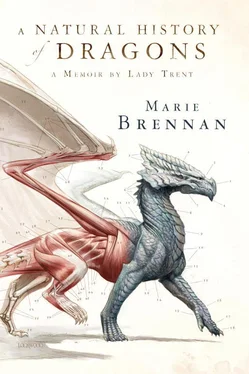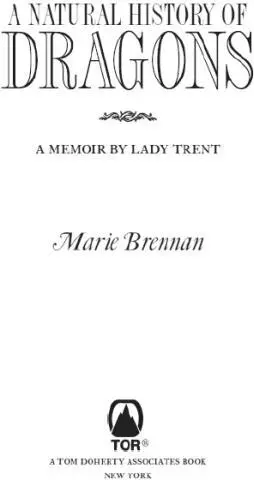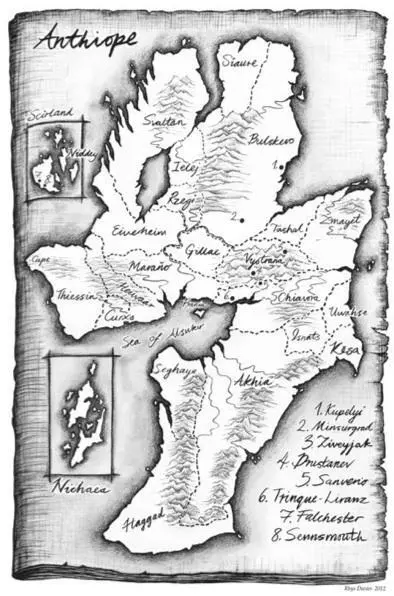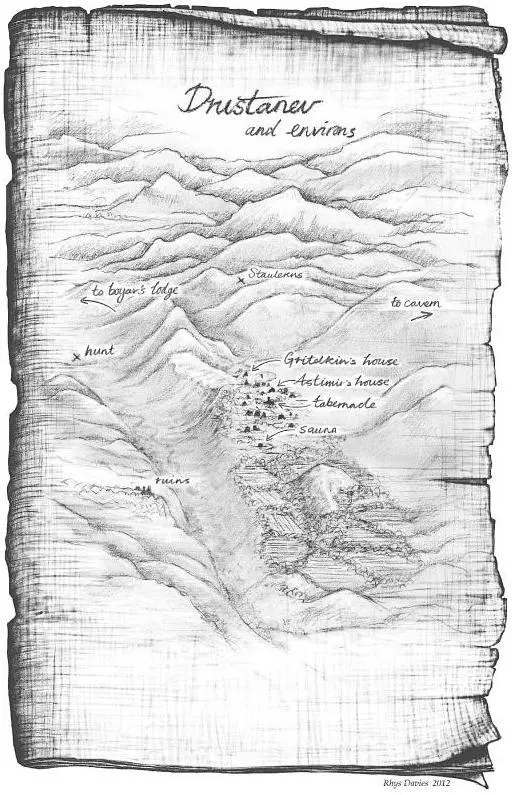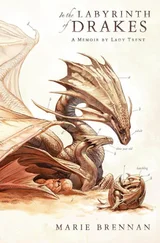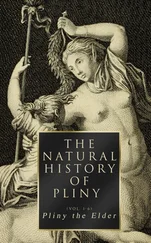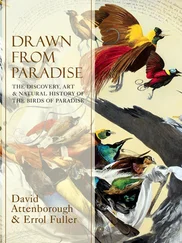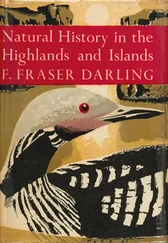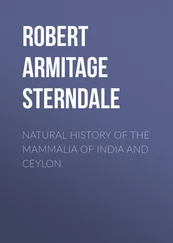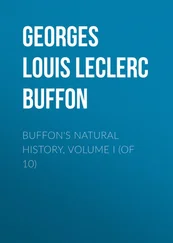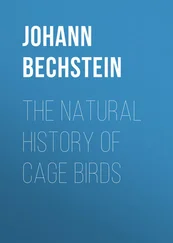Marie Brennan
A NATURAL HISTORY OF DRAGONS
A MEMOIR BY LADY TRENT

Not a day goes by that the post does not bring me at least one letter from a young person (or sometimes one not so young) who wishes to follow in my footsteps and become a dragon naturalist. Nowadays, of course, the field is quite respectable, with university courses and intellectual societies putting out fat volumes titled Proceedings of some meeting or other. Those interested in respectable things, however, attend my lectures. The ones who write to me invariably want to hear about my adventures: my escape from captivity in the swamps of Mouleen, or my role in the great Battle of Keonga, or (most frequently) my flight to the inhospitable heights of the Mrtyahaima peaks, the only place on earth where the secrets of dragonkind could be unlocked.
Even the most dedicated of letter-writers could not hope to answer all these queries personally. I have therefore accepted the offer from Messrs. Carrigdon & Rudge to publish a series of memoirs chronicling the more interesting portions of my life. By and large these shall focus on those expeditions which led to the discovery for which I have become so famous, but there shall also be occasional digressions into matters more entertaining, personal, or even (yes) salacious. One benefit of being an old woman now, and moreover one who has been called a “national treasure,” is that there are very few who can tell me what I may and may not write.
Be warned, then: the collected volumes of this series will contain frozen mountains, foetid swamps, hostile foreigners, hostile fellow countrymen, the occasional hostile family member, bad decisions, misadventures in orienteering, diseases of an unromantic sort, and a plenitude of mud. You continue at your own risk. It is not for the faint of heart—no more so than the study of dragons itself. But such study offers rewards beyond compare: to stand in a dragon’s presence, even for the briefest of moments—even at the risk of one’s life—is a delight that, once experienced, can never be forgotten. If my humble words convey even a fraction of that wonder, I will rest content.
We must, of course, begin at the beginning, before the series of discoveries and innovations that transformed the world into the one you, dear reader, know so well. In this ancient and nearly forgotten age lie the modest origins of my immodest career: my childhood and my first foreign expedition, to the mountains of Vystrana. The basic facts of this expedition have long since become common knowledge, but there is much more to the tale than you have heard.
Isabella, Lady Trent Casselthwaite, Linshire 11 Floris, 5658
In which the memoirist forms a youthful obsession with dragons, and engineers an opportunity to pursue that obsession
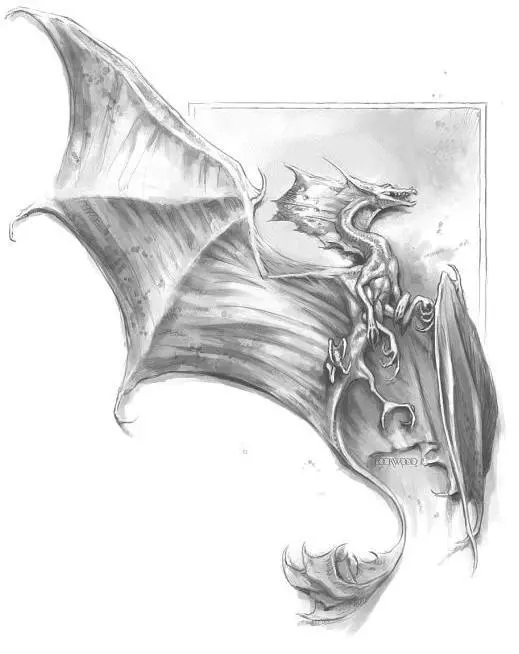
A SPARKLING (ACTUAL SIZE)
Greenie — An unfortunate incident with a dove — My obsession with wings — My family — The influence of Sir Richard Edgeworth
When I was seven, I found a sparkling lying dead on a bench at the edge of the woods which formed the back boundary of our garden, that the groundskeeper had not yet cleared away. With much excitement, I brought it for my mother to see, but by the time I reached her it had mostly collapsed into ash in my hands. Mama exclaimed in distaste and sent me to wash.
Our cook, a tall and gangly woman who nonetheless produced the most amazing soups and soufflés (thus putting the lie to the notion that one cannot trust a slender cook) was the one who showed me the secret of preserving sparklings after death. She kept one on her dresser top, which she brought out for me to see when I arrived in her kitchen, much cast down from the loss of the sparkling and from my mother’s chastisement. “However did you keep it?” I asked her, wiping away my tears. “Mine fell all to pieces.”
“Vinegar,” she said, and that one word set me upon the path that led to where I stand today.
If found soon enough after death, a sparkling (as many of the readers of this volume no doubt know) may be preserved by embalming it in vinegar. I sailed forth into our gardens in determined search, a jar of vinegar crammed into one of my dress pockets so the skirt hung all askew. The first one I found lost its right wing in the process of preservation, but before the week was out I had an intact specimen: a sparkling an inch and a half in length, his scales a deep emerald in color. With the boundless ingenuity of a child, I named him Greenie, and he sits on a shelf in my study to this day, tiny wings outspread.
Sparklings were not the only things I collected in those days. I was forever bringing home other insects and beetles (for back then we classified sparklings as an insect species that simply resembled dragons, which today we know to be untrue), and many other things besides: interesting rocks, discarded bird feathers, fragments of eggshell, bones of all kinds. Mama threw fits until I formed a pact with my maid, that she would not breathe a word of my treasures, and I would give her an extra hour a week during which she could sit down and rest her feet. Thereafter my collections hid in cigar boxes and the like, tucked safely into my closets where my mother would not go.
No doubt some of my inclinations came about because I was the sole daughter in a set of six children. Surrounded as I was by boys, and with our house rather isolated in the countryside of Tamshire, I quite believed that collecting odd things was what children did, regardless of sex. My mother’s attempts to educate me otherwise left little mark, I fear. Some of my interest also came from my father, who like any gentleman in those days kept himself moderately informed of developments in all fields: law, theology, economics, natural history, and more.
The remainder of it, I fancy, was inborn curiosity. I would sit in the kitchens (where I was permitted to be, if not encouraged, only because it meant I was not outside getting dirty and ruining my dresses), and ask the cook questions as she stripped a chicken carcass for the soup. “Why do chickens have wishbones?” I asked her one day.
One of the kitchen maids answered me in the fatuous tones of an adult addressing a child. “To make wishes on!” she said brightly, handing me one that had already been dried. “You take one side of it—”
“I know what we do with them,” I said impatiently, cutting her off without much tact. “That’s not what chickens have them for, though, or surely the chicken would have wished not to end up in the pot for our supper.”
“Heavens, child, I don’t know what they grow them for,” the cook said. “But you find them in all kinds of birds—chickens, turkeys, geese, pigeons, and the like.”
Читать дальше
